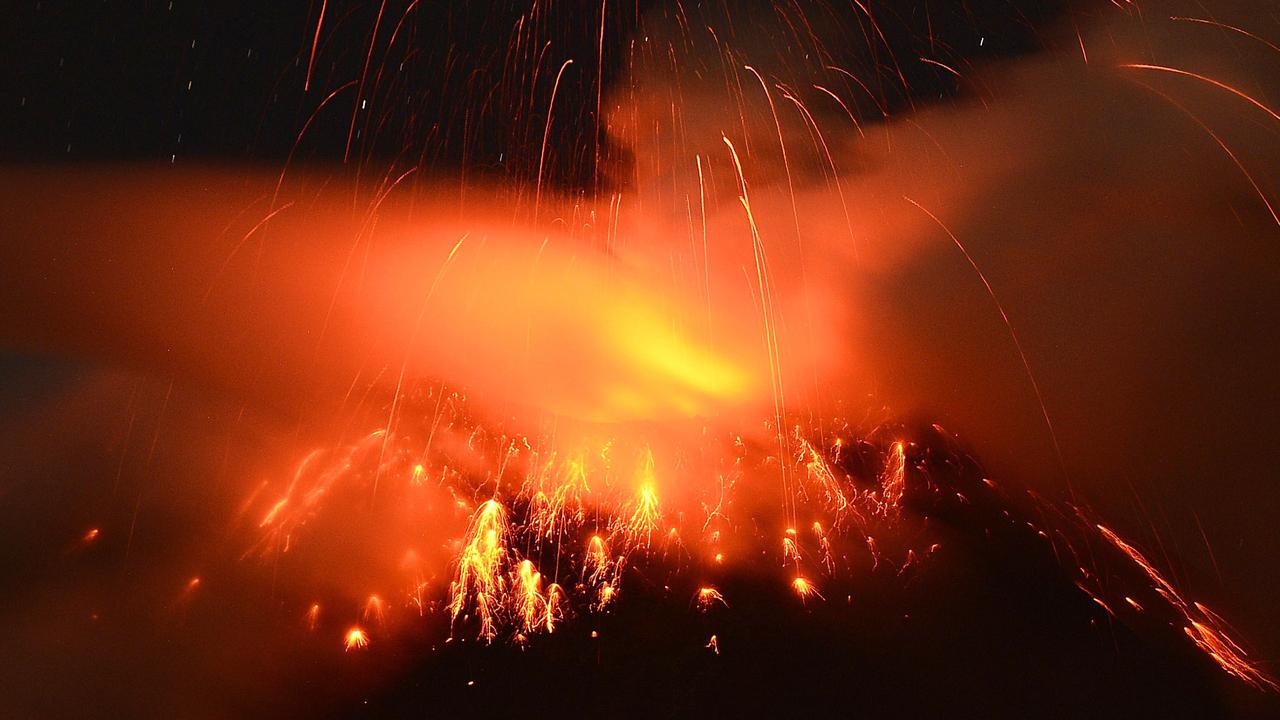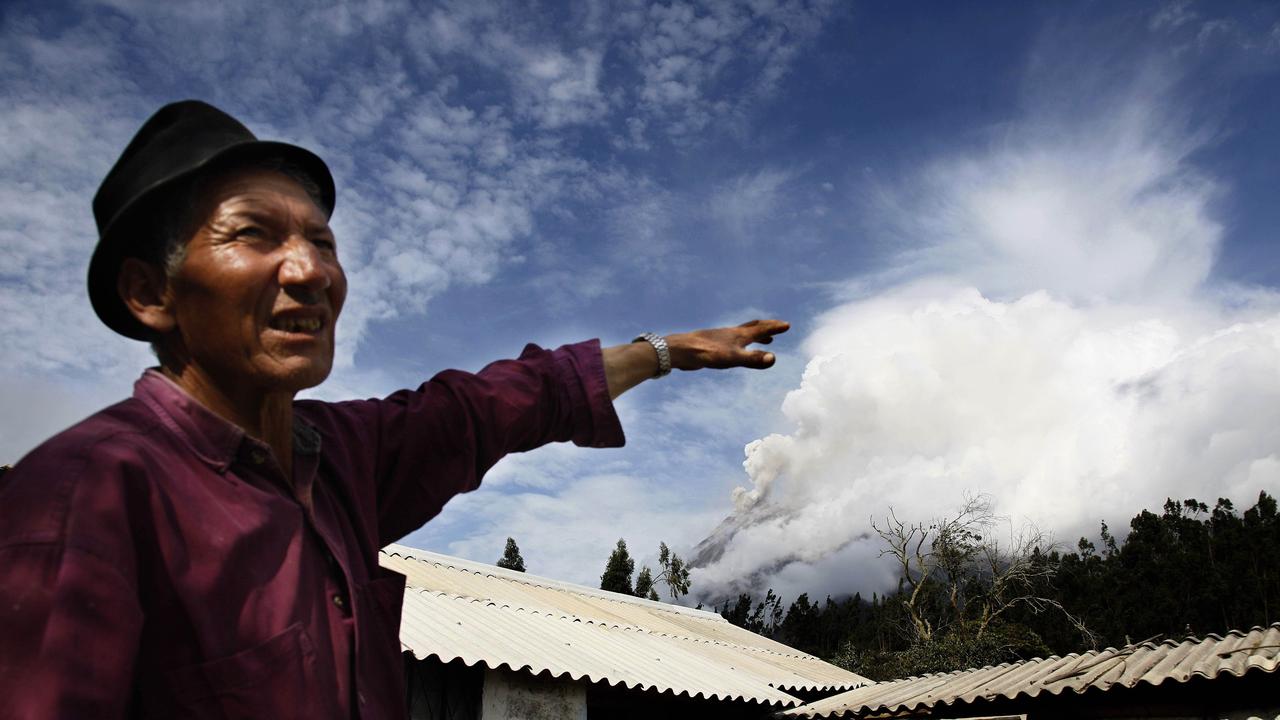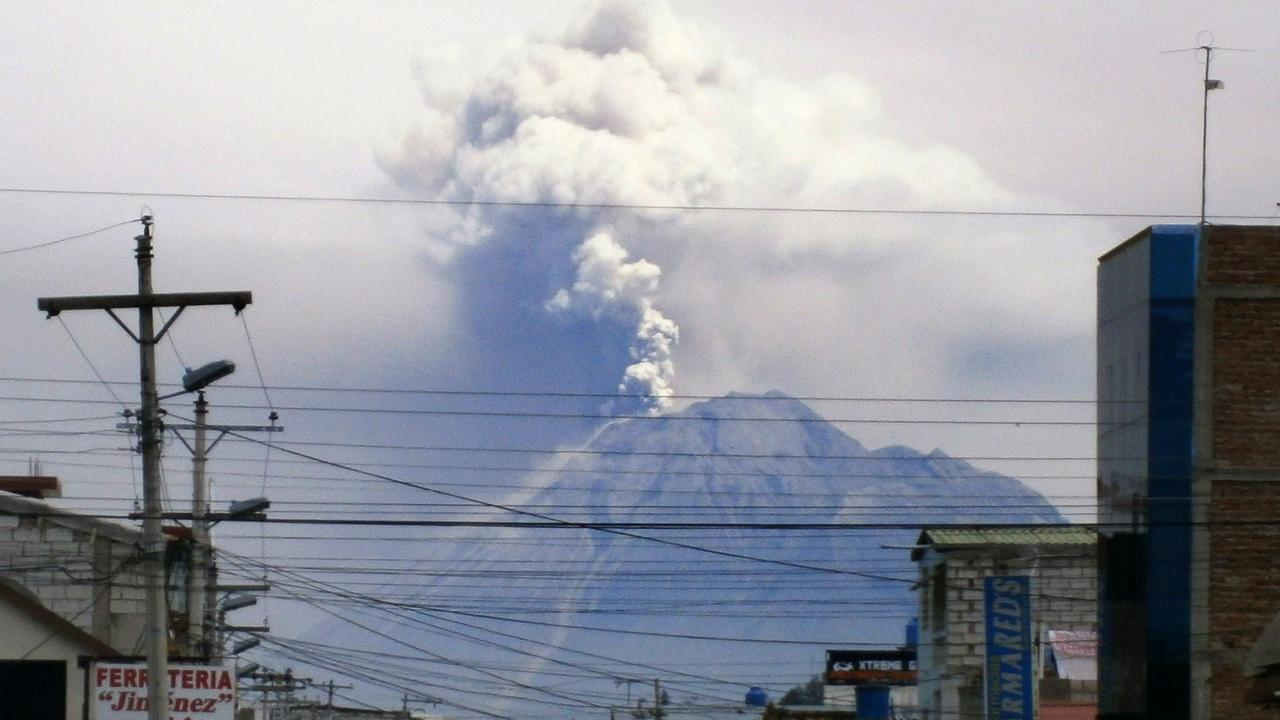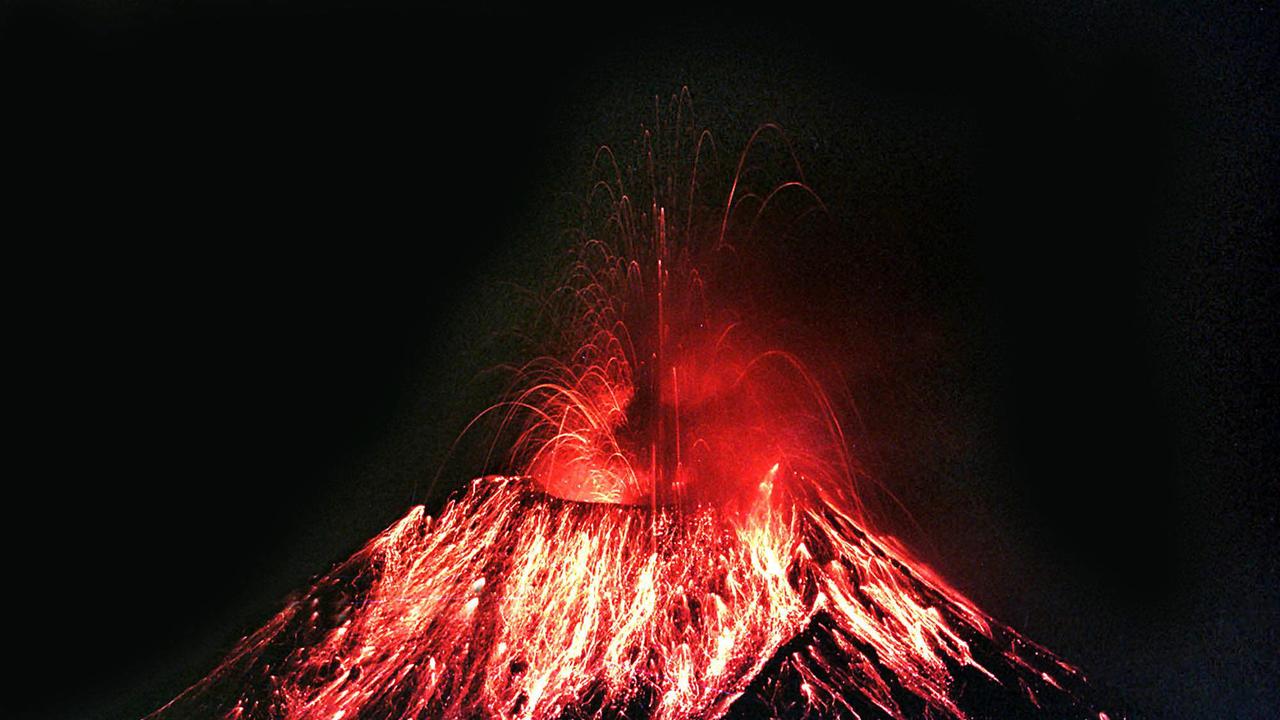Concerns Ecuadorean volcano could collapse as side of mountain shows ‘rapid deformation’
Locals call it the Throat of Fire, and scientists are now worried that a volcano which has been active more than two decades could collapse.
Volcano watchers are keeping a close eye on one that’s been active for more than 20 years, amid fears it could erupt or collapse.
The west flank of the Tungurahua volcano in Ecuador has shown the strongest signs of deformation, believed to be caused by “ongoing eruptive activity” by scientists studying the site.
University of Exeter geophysical volcanologist Dr James Hickey, one of the authors of the latest research published in the journal Earth And Planetary Science Letters, said the team used data from space to track the crumbling mountain.
RELATED: Volcano tour guide shares recovery

“Using satellite data we have observed very rapid deformation of Tungurahua’s west flank, which our research suggests is caused by imbalances between magma being supplied and magma being erupted,” Dr Hickey said.
If the volcano does collapse it wouldn’t be the first time.
Tungurahua (meaning “Throat of Fire” in local indigenous languages) has already experienced two collapses (that we know of) following eruptions.

One of those is believed to have happened around 12,000 years ago.
It’s thought the volcano slowly rebuilt over 9000 years before erupting again.
That eruption left a scar on the west side of the mountain, which is the epicentre of the latest observed collapsing.

The deformations in the volcano could be due to magma being stored in this scar but the scientists don’t know for certain if that’s what’s causing it.
The high rate of deformation is a worrying sign of a potential eruption.
If the volcano collapses again it would likely rebuild like it has done twice before, but it could cause damage to areas around the mountain.
If the side of the mountain gives way it could cause landslides or rock avalanches which could travel several kilometres.
RELATED: Cops dismiss ‘offensive’ volcano claim

RELATED: NZ volcano death toll rises to 21
More than 25,000 people had to be evacuated when the volcano erupted in 1999.
The latest research is hoped to provide insight and early warning signs of potential eruptions rather than as a prediction of doom.
But a warning is only useful if someone pays attention to it.
New Zealand geological hazard monitor GeoNet issued a number of bulletins warning about unrest and bursts before the Whakaari/White Island volcano eruption in December, which killed 21 people.



